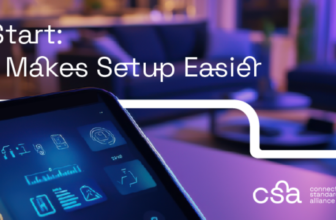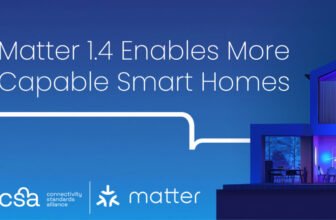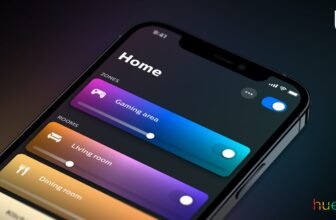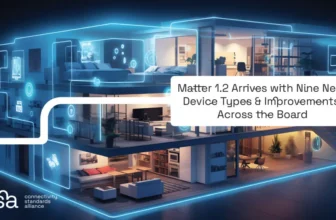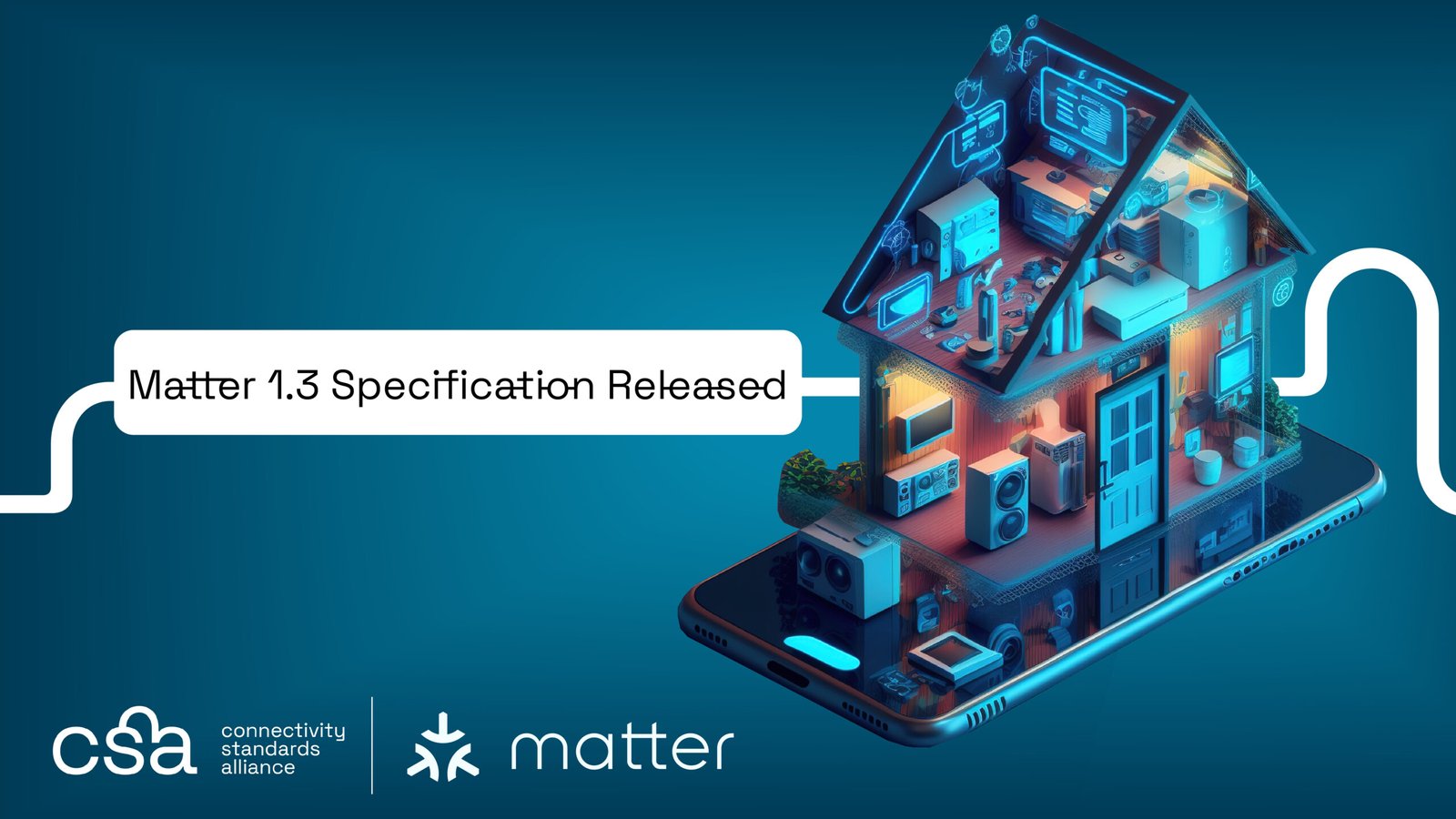
Ovens, microwaves, and EV chargers are examples of new device types. Additionally, Matter now supports scenes, allowing you to use a single command to control multiple devices.
What is Matter Standard? Matter is a ‘brand-independent’ open connectivity standard for Smart Home and IoT industry that makes it easier for devices to communicate, regardless of the brand or manufacturer of the devices. It’s designed to improve interoperability and security between different manufacturers.
Matter 1.3 Specification Update
Matter has steadily increased the range of supported device types and features since its official launch in the fall of 2022. Matter 1.3, which was recently announced, expands on both.
Since the launch of Matter 1.2 last fall, 19 different device types have been supported. With the latest update, these additional device types – EV chargers, water management devices, microwaves, ovens, cooktops, vent hoods, and laundry dryers – can now work with Matter. When permitted by law, each new device type can send notifications and remotely regulate standard features like the oven and cooktop’s temperature.
Existing device types are also enhanced with new features in Matter 1.3. Scenes allow you to use a single command to control multiple devices. Saying “good night” to your preferred smart speaker can trigger various automations, such as your doors locking, lights turning off, and blinds closing. An update for media casters and smart TVs lets you see more alerts from other devices on your screen. Additionally, energy usage can be reported by devices, so you can find out how much power your lamp uses with a compatible smart plug.
The goal of Matter, a smart home standard, is to make sure that connected devices from various manufacturers can function together with minimal hassle on your part. At the very least, that is the aim, and well-known tech companies like Apple, Samsung, Google, and Amazon support it.
Support for Energy and Water Management Systems

Added support for more appliances with Matter 1.3, including a variety of significant household appliances that are necessary for daily life.
Newly supported device types include:
- Microwave Ovens: When the microwave finishes operating, users can set the cooking time, power level, and mode of operation. They can also receive notifications such as “end of cycle” or “food ready.” The specification also supports controlling an extractor fan and light, which are common in “over-the-range” microwave installations.
- Ovens: The Matter 1.3 update includes configurations for built-in, standalone, and combination ovens with a cooktop. From an operational mode (standard, convection bake, roast, steam, broil/grill, proofing) and temperature-setting standpoint, each oven compartment can be individually controlled with information about the oven’s current state (i.e., preheating or cooling). Supported notifications include preheating and target temperature reached.
- Cooktops: Matter 1.3 supports cooktops (usually induction-based appliances), enabling remote access and control. Temperature control and measurement are made possible by the individual elements of the cooktop (where regulation allows).
- Extractor Hoods (Cooker Hoods, Vent Hoods): Matter 1.3 works with cooktop hoods in addition to ranges and cooktops. It permits the management of the light and fan settings in these devices, along with the condition and end-of-life of any filter material (HEPA filters, for example).
- Laundry Dryers: Matter 1.3 completes the pairing by adding support for laundry dryers, as Matter 1.2 already included support for washers. Users can remotely start and stop the dryer, as well as adjust the dryer’s mode and target temperature, depending on local safety laws. It is possible to receive vendor-specified alerts on error states and notifications such as “end of cycle.”
Improved Media Device Entertainment and Smart Home Management Features
- Matter Casting Media Players / TVs: Matter 1.3 brings enhanced TV functionality, such as text and track support, expanded TV app interaction options, enhanced casting initialization, push message and dialog support for new ambient experiences, and enhanced search capabilities. Additionally, Matter devices can now communicate with TVs and other screen-equipped devices in the home by sending notifications (e.g., alerts about a stuck robot vacuum, finished laundry, etc.)
Improvements to the User Experience
- Scenes: Scenes are now supported, giving smart home platforms and product manufacturers a standards-based way to set, read, and activate scenes on devices. Using scenes, users can combine settings in devices that can be activated with a single command to create a desired state for individual devices, rooms, or their entire home. One command can be used to deploy a state synchronously across multiple lights, such as when a user sets a scene that specifies the color and brightness of each light. Additionally, devices have the capacity to store the scenes of which they are a part, which enhances responsiveness by lowering the number of separate commands required to complete a scene transition.
- Command Batching: To reduce the time between commands being executed, a Matter controller can now combine several commands into a single message when interacting with Matter devices. For instance, batch commands can impact several devices when utilized with a Matter bridge, enabling the bridge to offer a more synchronized experience. Typical instances include reducing the “popcorn effect” that occasionally appears in applications for smart lighting.
Enhancing the Developer Experience and Debugging
- Improved Network Commissioning: Devices can now report which Wi-Fi bands they support thanks to improved Network Commissioning. Enforcing the Wi-Fi directed scan as a requirement enhances the success of setup and permits the reporting of more actionable connectivity errors during setup. The Thread version and supported features of Thread devices can now be communicated through attributes included in the Network Commissioning cluster.
- Event Timestamp Synchronization: Even if a particular device isn’t capable of supporting time synchronization, it is still possible to synchronize the timestamps of events between devices.
- Extended Beaconing Period: This feature gives users more time to commission their devices by allowing devices to beacon, or “advertize,” for longer periods of time.
- Cluster Revisions: A number of clusters, including the Basic Information, Channel, Door Lock, General Diagnostics, Media Playback, Network Commissioning, Power Source, and Thermostat clusters, have experienced significant changes.
- Automatic SDK XML cluster description from spec text: The Matter Specification and SDK functions are more easily aligned thanks to new tooling. The development of new standardized clusters is facilitated by the tooling. As we use the tools to remove discrepancies between the technical spec and the Matter SDK, enhancing implementation consistency, it also fosters interoperability.
Matter still does not support some popular smart home device types, such as security cameras and video doorbells, and it lacks advanced features like scheduling for many of the categories it does support.
Matter is based on the concept of a truly interoperable smart home. Theoretically, you could purchase any smart home appliance from any manufacturer, operate it with your preferred app or smart speaker, and have it integrate flawlessly with all of your other connected devices. The most recent update keeps us moving in the direction of that goal, and even though some things are going more slowly than we’d like, we are glad to see this progress.
Matter 1.3 certification is open as of now, and the Matter 1.3 devices and improvements are expected to be available on the market later this year. More information on the changes can be found on the CSA website.



